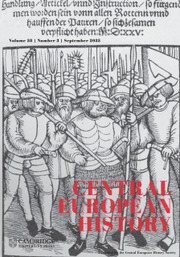Even under dire circumstances, international law can have powerful effects. This is one of many insights Yorai Linenberg brings to light in his fascinating and meticulously researched monograph based on his 2021 doctoral dissertation at the London School of Economics. By focusing his study on an under-researched group of prisoners of war (POW), namely on Jewish American and British soldiers in German captivity during the Second World War, he positions his research at the “converging point” (7) between the fields of the history of POWs in Nazi captivity and the Holocaust.
The starting point of Linenberg's deliberations is that approximately 4.700 American and British Jewish POWs in German captivity (6) were, overall, treated according to the 1929 Geneva Convention. Against the background of the indisputable willingness of Nazi Germany to violate international treaties and its radical antisemitic ideology ultimately leading to the Holocaust, this “challenges the accepted perception of the Final solution” (2)—and calls for further investigation.
In his elaborate introduction, Linenberg points out that existing explanations for “the relatively fair treatment of non-Soviet Jewish POWs” tend to be simplistic: Not least the influential “reciprocity argument” (18)—the notion that Germany showed restraint in order to not conversely endangering its own soldiers in Allied captivity—seems only partly plausible. Subsequently, the book is divided into four chapters of relatively similar length. While the first and second chapters follow the perspective of the POWs during their “captivity lifecycle”, chapters three and four take “a top-down approach” (37) that starts out from Wehrmacht policies concerning the POWs.
The first, and most extensive, chapter deals with the experiences of this specific group of POWs during captivity. Thereby, Linenberg proceeds from the sociological understanding of a closed space, for example a mental hospital, as “‘Total Institution’, where inmates’ activities were conducted in one place [. . .] and dictated by a single authority” (40). Using this concept as analytical tool, he modifies it along the way. As he is able to show, the Jewish POWs interacted intensively with civilians from the outside world (100). Yet the author's main argument goes further: He convincingly demonstrates that “the ‘Total Institution’ provided an unintended reverse-protection for POWs inside the camps from external events.” (57) The chapter's empirically sound findings are as lucid as astounding: “The ongoing radicalization throughout the war” of Nazi Germany's “anti-Semitic policies [. . .] did not cross the boundaries of the POW camps” (100).
The second chapter investigates “how individual American and British Jewish POWs in German captivity dealt with their Jewish identity” (102). It ascertains that, for most of them and even if their Jewishness had been an insignificant factor before the war, as POWs it advanced as “the overriding element of their identity” (136). While the Germans handled “demonstrations of Jewish identity” (137) in various ways, they were not generally suppressed. Linenberg even puts forward plausible examples where “Nazi POW camps had become one of the very few spaces in occupied Europe where it was possible for Jews to demonstrate their ethnic and religious identity in public with pride.” (137)
The “traumatic event” (177) of segregating Jewish POWs from their fellow American and British comrades occupies center stage in chapter three. The author shows that cases of such separation attempts were rare and, when they occurred, sometimes even failed due to “the resistance and support displayed by the non-Jewish POWs” (179).
The fourth chapter finally discloses how important the mindsets of the Wehrmacht's POW office personnel, of the camp commandants and the guards were: For there was no “Führerbefehl”—no order issued by Hitler—regarding non-Soviet Jewish POWs, these men “followed orders” and thus “were able to abide by the Geneva Convention” (230). Linenberg puts forward a strong yet nuanced argument, stressing the special social profile of the German POW personnel that distinguished it from the conscripted frontline soldiers of the Wehrmacht. Older, and oftentimes veterans of the First World War, these guards were less indoctrinated by National Socialist ideas (13, 153). Thus, they had greater resemblance to the members of the police battalion Christopher Browning has analyzed in his important Holocaust study (Ordinary Men: Reserve Police Battalion 101 and the Final Solution in Poland [1992]). This, by no means, vindicates the Wehrmacht, as Linenberg makes abundantly clear: Their “respect for authority resulted in conformity to the larger group: in the case of the police battalions, this conformity led to their participation in the murder of Jewish civilians; in the case of POW camp personnel, the conformity meant that cases of mistreatment of American and British Jewish POWs […] were not common” (99).
Linenberg has written a highly insightful, multilayered and truly thought-provoking study that is based upon far-reaching source material: Apart from various oral testimonies, a bulk of memoirs (also in Hebrew) and other ego-documents, he consulted, among others, the relevant archives in Germany, the US, the UK, Israel, and Switzerland at great depth. His command of the source material is excellent, and, in an exemplary manner, he makes sure that the reader understands how he reached his conclusions. Nevertheless, some room for improvement also exists: Although Linenberg touches upon the general history of the Geneva Convention, this remains concentrated on the first half of the 20th century and he falls short of correlating his findings with broader trends of the history of international law. While he sometimes mentions cases where antisemitism by American and British soldiers comes to light (49, 61), there is no systematic treatment of this relevant topic (see instead Joseph W. Bendersky: The “Jewish Threat”: Anti-Semitic Politics of the U.S. Army [2000]). Finally, as Linenberg concedes himself, he is only able to present “specific reasons” (240) for the relatively civilized treatment of these Jewish POWs, but, in the end, their survival remains “simply incomprehensible” (241). One wonders—and the author gives no clear answer—what these remarkable findings actually mean for our general understanding of the history of the Nazi regime and the Holocaust. Yet perhaps this is a question for another book.


